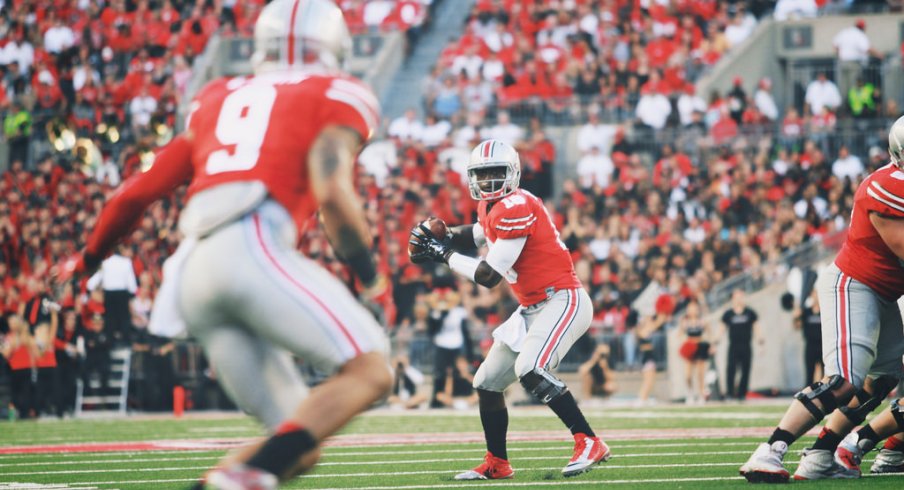After looking like an overwhelmed freshman in the week-two loss to Virginia Tech, J.T. Barrett has been remarkable.
His 909 yards, 14 touchdowns, and (perhaps most impressive of all) a 75% completion rate have shown remarkable growth in a very short period of time.
While this progression is old news to most Ohio State fans, it's still worth noting, especially considering the way he's done it. Though the Buckeye running game found its legs during the same stretch, Barrett's success through was not through play-action passes.
Since taking over in 2012, Urban Meyer's offensive philosophy seems to have revolved around a devastating inside running game and a deep passing attack that took advantage of Braxton Miller's arm strength, while punishing teams that tried to play too far forward to stop the run.
Instead, the 2014 edition of the Buckeyes most resembles the offenses we saw from Meyer in the past at Florida and Utah. Though he's had loads of talent in the backfield, this is the first time Meyer has had such a deep and diverse group of receivers and tight ends in Columbus. Rotating six players at receiver and two more at tight end, Barrett has a multitude of options at his disposal.
The result has been a passing attack that is much more reliant on short and intermediate throws. Players like tight end Nick Vannett have emerged as safety blankets, catching eight passes in that three-game span.
A perfect example of the transition of the Buckeye passing attack with Barrett at the helm is the emergence of the Follow-Pivot concept. This concept was one of Meyer's favorites at Florida, and was expected by many to be a base concept from day-one in Columbus.
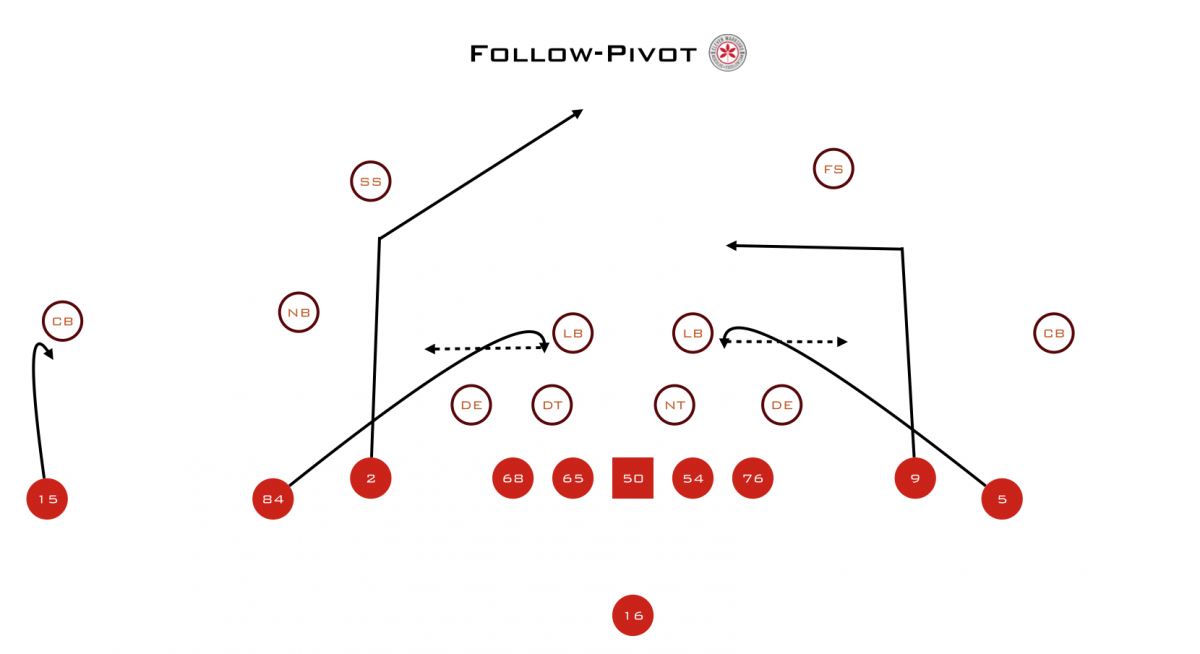
The concept looks to attack the middle of the field, and is considered one of the best at beating the Cover 4 defenses the Buckeyes have seen quite a bit this season. It's most commonly called from a 5-wide formation in an effort to take away one of the cornerbacks while stressing the middle of the defense.
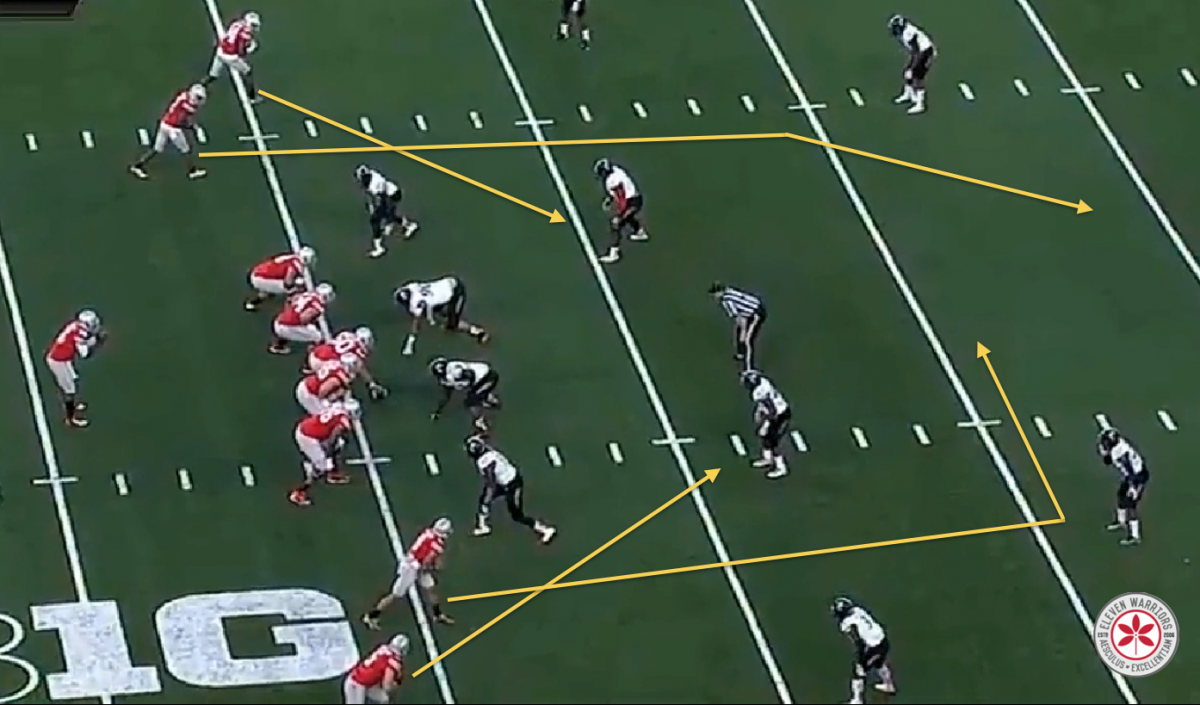
As we see in this example against Cincinnati, Ohio State often faces a six-man box with four down linemen and two linebackers. The Buckeyes will attack the linebackers with the two players running the shorter "pivot" routes. These look at first like a crossing route, and with the other receiver to that side running a deeper, in-breaking route, it appears to be the "follow" concept to opponents (hence the name).
But instead of crossing, the receiver stops their route right in front of the linebacker, almost boxing out the linebacker as if they were a basketball player trying to post-up a defender down low on the block. Though they have the option of breaking their route further to the outside, these receivers often just sit there sucking up the linebackers.
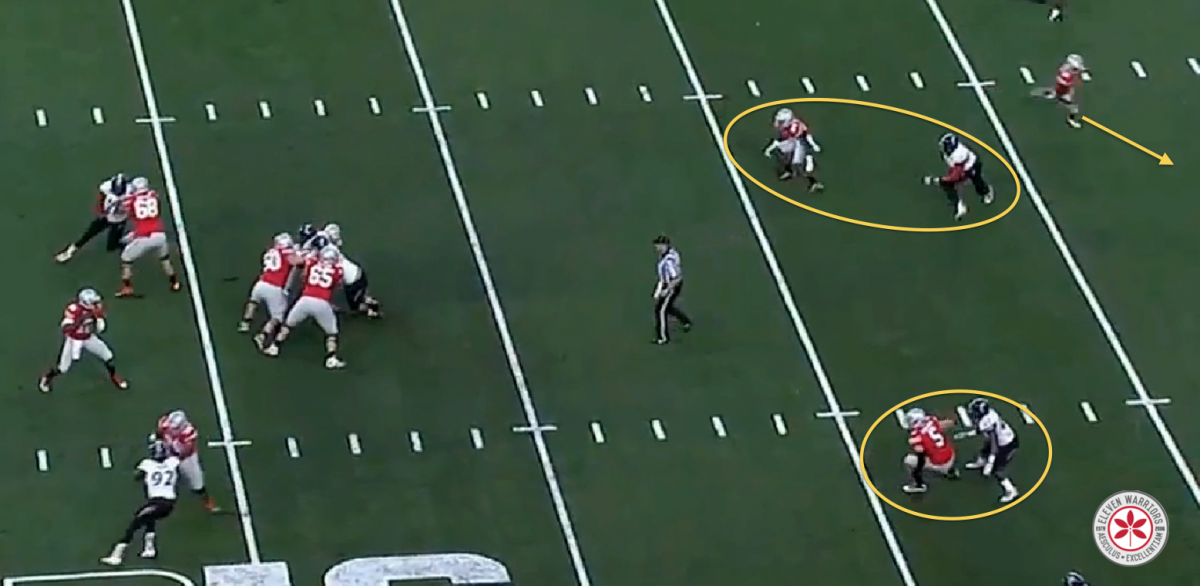
Spotting two receivers setting up camp like this, often with one on each hash mark, is the easiest way to identify the follow-pivot play when watching on TV.
But the concept isn't really designed to go to these two though; they're just the window dressing. Instead, the play is really set up to attack the safeties with two deeper routes.
The Post/Dig combination from the two outside receivers is essentially the same route combo seen in the classic NCAA pass that is in every college and pro playbook, meant to make a safety playing the middle of the field choose whether to step up and cover the dig, or run with the player coming the opposite way that's running a post.
But against two deep safeties, this concept exploits the basic technique that the safeties are taught to play. As seen above, Dontre Wilson cuts inside on his post route into the gap just vacated by the inside linebacker who is running up to cover the Pivot route. The safety to that side of the field is set up far too deep to step up on Wilson right away, instead looking to take an angle that will eventually bring him even to the receiver.
With one safety running deep with Wilson, there is no one to cover Devin Smith as he runs the Dig route.
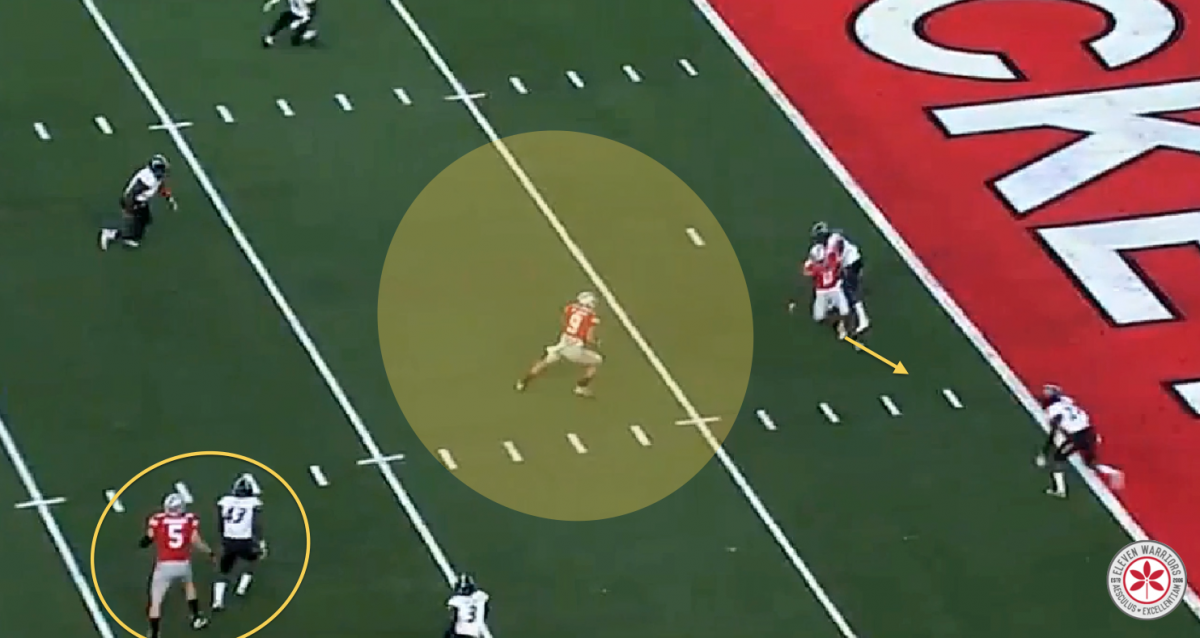
Smith has also broken his route right behind the area vacated by a linebacker, and running straight for the area where the safety on Wilson had just been. With no linebackers or safeties in the area, Barrett has a wide open throw ten yards away and right over the middle. Not only have the Buckeyes completed an easy pass downfield, they also have the ball in the hands of a very dangerous runner in the open field.
Though this seems like an easy concept to master, all four receivers involved in the play must be threats to expose a defense. Through five games, there are six players with at least eight catches on this Buckeye squad, a far cry from the 2012 & 2013 Buckeye pass offenses which relied much too heavily on Smith and Philly Brown.
Barrett receives credit for recognizing open receivers and getting the ball out quickly and accurately. But he also should be credited for not picking favorites. Even though Mike Thomas and Devin Smith have found the end zone quite a bit, Barrett isn't looking for them right away, confident that no matter who catches the ball they'll be able to make a play.
Follow-Pivot is just one example of the many ways Buckeye receivers are helping each other, but there have been many others. In order to beat teams like Michigan State, the Buckeyes will need to be able to rely on these short, intermediate passing concepts that stretch a defense by forcing it to cover more ground.
As the Buckeyes get deeper into Big Ten play, it will be interesting to see if such concepts remain a focal point of the offense. They've certainly been fun to watch.
